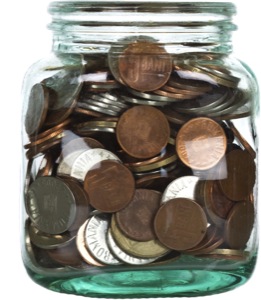
Budgeting is boring! There is no other way to describe it. Tracking all your expenses and inputting them into categories created in one of those financial programs can be tedious. Even the online services that connect to your banking account require monitoring and correcting. It is no wonder that most people never even attempt to track their spending.
However, it is still crucial not to spend more than you make. That’ll lead to racking up credit card debt. The way to avoid this situation is to have some type of spending plan. I have the solution for a simple and easy spending plan that anyone can follow. Just follow these simple steps:
1) Start with your monthly take-home pay. This is the amount actually deposited into your checking account. Federal and state taxes, 401(k) savings, health insurance premiums and other payroll deductions have all been paid.
2) Subtract all of the bills that must be paid every month from your take-home pay. This includes things like rent or mortgage, cell phone, cable, Internet, car insurance, electricity, gym dues, student loan payment, credit card payment and any other recurring fixed expense.
3) The amount leftover is how much you can spend on everything else: groceries, gas, dining out, entertainment, home supplies, haircuts and whatever else you buy during the month.
4) The final step is to track your “everything else” amount during the month so you don’t overspend. You’ll know when to start cutting back at the end of the month when you’re about to run out of money.
This method will get you focused on how much you spend and gives you a set amount to spend on whatever you want. If you find yourself coming up short each month, then you can break down your everything else amount into smaller categories like food, entertainment, gas, home supplies and other variable expenses. Do this for a month or two to discover the areas that are causing the budget busting.
If even this sounds like too much work, then I have an easier solution. Only track how much you spend on food. That’s it! Food spending is the most common expense that breaks the budget. Focus on this one area and most of those money worries will disappear.
The average amount spent on food is 15 percent of gross income. For one month, keep all the receipts for every trip to the grocery store, lunches during the work week, dining out and trips to the farmers market. Add up all those receipts at the end of the month. Divide the total food amount by your monthly income. If it’s more than 15 percent, then you found your spending problem.
The good news is cutting the food bill is easy. Make your lunch for work, use a list when grocery shopping, buy less expensive store brands, stay away from prepared foods and cut back on dining out to once a week. Also, never shop for food when you are hungry or tired.
No spreadsheets, no budget for every expense, and no time-consuming tracking system for every dollar spent. It’s simple and easy. Now that is a spending plan anyone can follow!
Steve Doster is a Certified Financial Planner™ professional providing commission-free financial advice for do-it-yourself investors. You can reach Steve at Doster Financial Planning by phone 619-688-1192 or email steve@dosterfinancialplanning.com. You can also follow Steve on Facebook, Linked In, Twitter, or blog to get more personal finance advice and tips.











